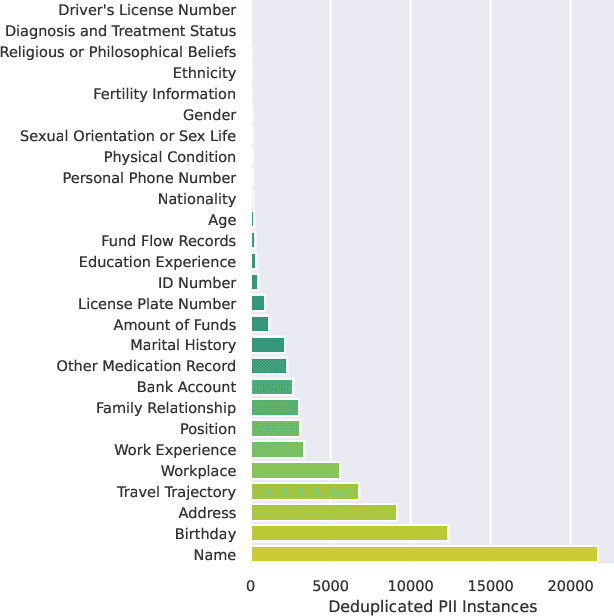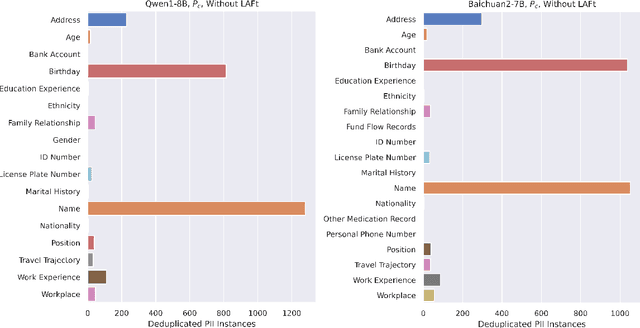Zenglin Xu
Alan
Renormalization Group Guided Tensor Network Structure Search
Dec 31, 2025Abstract:Tensor network structure search (TN-SS) aims to automatically discover optimal network topologies and rank configurations for efficient tensor decomposition in high-dimensional data representation. Despite recent advances, existing TN-SS methods face significant limitations in computational tractability, structure adaptivity, and optimization robustness across diverse tensor characteristics. They struggle with three key challenges: single-scale optimization missing multi-scale structures, discrete search spaces hindering smooth structure evolution, and separated structure-parameter optimization causing computational inefficiency. We propose RGTN (Renormalization Group guided Tensor Network search), a physics-inspired framework transforming TN-SS via multi-scale renormalization group flows. Unlike fixed-scale discrete search methods, RGTN uses dynamic scale-transformation for continuous structure evolution across resolutions. Its core innovation includes learnable edge gates for optimization-stage topology modification and intelligent proposals based on physical quantities like node tension measuring local stress and edge information flow quantifying connectivity importance. Starting from low-complexity coarse scales and refining to finer ones, RGTN finds compact structures while escaping local minima via scale-induced perturbations. Extensive experiments on light field data, high-order synthetic tensors, and video completion tasks show RGTN achieves state-of-the-art compression ratios and runs 4-600$\times$ faster than existing methods, validating the effectiveness of our physics-inspired approach.
A Polynomial-time Algorithm for Online Sparse Linear Regression with Improved Regret Bound under Weaker Conditions
Oct 31, 2025Abstract:In this paper, we study the problem of online sparse linear regression (OSLR) where the algorithms are restricted to accessing only $k$ out of $d$ attributes per instance for prediction, which was proved to be NP-hard. Previous work gave polynomial-time algorithms assuming the data matrix satisfies the linear independence of features, the compatibility condition, or the restricted isometry property. We introduce a new polynomial-time algorithm, which significantly improves previous regret bounds (Ito et al., 2017) under the compatibility condition that is weaker than the other two assumptions. The improvements benefit from a tighter convergence rate of the $\ell_1$-norm error of our estimators. Our algorithm leverages the well-studied Dantzig Selector, but importantly with several novel techniques, including an algorithm-dependent sampling scheme for estimating the covariance matrix, an adaptive parameter tuning scheme, and a batching online Newton step with careful initializations. We also give novel and non-trivial analyses, including an induction method for analyzing the $\ell_1$-norm error, careful analyses on the covariance of non-independent random variables, and a decomposition on the regret. We further extend our algorithm to OSLR with additional observations where the algorithms can observe additional $k_0$ attributes after each prediction, and improve previous regret bounds (Kale et al., 2017; Ito et al., 2017).
SecFwT: Efficient Privacy-Preserving Fine-Tuning of Large Language Models Using Forward-Only Passes
Jun 18, 2025Abstract:Large language models (LLMs) have transformed numerous fields, yet their adaptation to specialized tasks in privacy-sensitive domains, such as healthcare and finance, is constrained by the scarcity of accessible training data due to stringent privacy requirements. Secure multi-party computation (MPC)-based privacy-preserving machine learning offers a powerful approach to protect both model parameters and user data, but its application to LLMs has been largely limited to inference, as fine-tuning introduces significant computational challenges, particularly in privacy-preserving backward propagation and optimizer operations. This paper identifies two primary obstacles to MPC-based privacy-preserving fine-tuning of LLMs: (1) the substantial computational overhead of backward and optimizer processes, and (2) the inefficiency of softmax-based attention mechanisms in MPC settings. To address these challenges, we propose SecFwT, the first MPC-based framework designed for efficient, privacy-preserving LLM fine-tuning. SecFwT introduces a forward-only tuning paradigm to eliminate backward and optimizer computations and employs MPC-friendly Random Feature Attention to approximate softmax attention, significantly reducing costly non-linear operations and computational complexity. Experimental results demonstrate that SecFwT delivers substantial improvements in efficiency and privacy preservation, enabling scalable and secure fine-tuning of LLMs for privacy-critical applications.
Efficient Network Automatic Relevance Determination
Jun 14, 2025



Abstract:We propose Network Automatic Relevance Determination (NARD), an extension of ARD for linearly probabilistic models, to simultaneously model sparse relationships between inputs $X \in \mathbb R^{d \times N}$ and outputs $Y \in \mathbb R^{m \times N}$, while capturing the correlation structure among the $Y$. NARD employs a matrix normal prior which contains a sparsity-inducing parameter to identify and discard irrelevant features, thereby promoting sparsity in the model. Algorithmically, it iteratively updates both the precision matrix and the relationship between $Y$ and the refined inputs. To mitigate the computational inefficiencies of the $\mathcal O(m^3 + d^3)$ cost per iteration, we introduce Sequential NARD, which evaluates features sequentially, and a Surrogate Function Method, leveraging an efficient approximation of the marginal likelihood and simplifying the calculation of determinant and inverse of an intermediate matrix. Combining the Sequential update with the Surrogate Function method further reduces computational costs. The computational complexity per iteration for these three methods is reduced to $\mathcal O(m^3+p^3)$, $\mathcal O(m^3 + d^2)$, $\mathcal O(m^3+p^2)$, respectively, where $p \ll d$ is the final number of features in the model. Our methods demonstrate significant improvements in computational efficiency with comparable performance on both synthetic and real-world datasets.
FinHEAR: Human Expertise and Adaptive Risk-Aware Temporal Reasoning for Financial Decision-Making
Jun 10, 2025Abstract:Financial decision-making presents unique challenges for language models, demanding temporal reasoning, adaptive risk assessment, and responsiveness to dynamic events. While large language models (LLMs) show strong general reasoning capabilities, they often fail to capture behavioral patterns central to human financial decisions-such as expert reliance under information asymmetry, loss-averse sensitivity, and feedback-driven temporal adjustment. We propose FinHEAR, a multi-agent framework for Human Expertise and Adaptive Risk-aware reasoning. FinHEAR orchestrates specialized LLM-based agents to analyze historical trends, interpret current events, and retrieve expert-informed precedents within an event-centric pipeline. Grounded in behavioral economics, it incorporates expert-guided retrieval, confidence-adjusted position sizing, and outcome-based refinement to enhance interpretability and robustness. Empirical results on curated financial datasets show that FinHEAR consistently outperforms strong baselines across trend prediction and trading tasks, achieving higher accuracy and better risk-adjusted returns.
Guideline Forest: Experience-Induced Multi-Guideline Reasoning with Stepwise Aggregation
Jun 09, 2025



Abstract:Human reasoning is flexible, adaptive, and grounded in prior experience-qualities that large language models (LLMs) still struggle to emulate. Existing methods either explore diverse reasoning paths at inference time or search for optimal workflows through expensive operations, but both fall short in leveraging multiple reusable strategies in a structured, efficient manner. We propose Guideline Forest, a framework that enhances LLMs reasoning by inducing structured reasoning strategies-called guidelines-from verified examples and executing them via step-wise aggregation. Unlike test-time search or single-path distillation, our method draws on verified reasoning experiences by inducing reusable guidelines and expanding each into diverse variants. Much like human reasoning, these variants reflect alternative thought patterns, are executed in parallel, refined via self-correction, and aggregated step by step-enabling the model to adaptively resolve uncertainty and synthesize robust solutions.We evaluate Guideline Forest on four benchmarks-GSM8K, MATH-500, MBPP, and HumanEval-spanning mathematical and programmatic reasoning. Guideline Forest consistently outperforms strong baselines, including CoT, ReAct, ToT, FoT, and AFlow. Ablation studies further highlight the effectiveness of multi-path reasoning and stepwise aggregation, underscoring the Guideline Forest's adaptability and generalization potential.
Simple Yet Effective: Extracting Private Data Across Clients in Federated Fine-Tuning of Large Language Models
Jun 06, 2025



Abstract:Federated fine-tuning of large language models (FedLLMs) presents a promising approach for achieving strong model performance while preserving data privacy in sensitive domains. However, the inherent memorization ability of LLMs makes them vulnerable to training data extraction attacks. To investigate this risk, we introduce simple yet effective extraction attack algorithms specifically designed for FedLLMs. In contrast to prior "verbatim" extraction attacks, which assume access to fragments from all training data, our approach operates under a more realistic threat model, where the attacker only has access to a single client's data and aims to extract previously unseen personally identifiable information (PII) from other clients. This requires leveraging contextual prefixes held by the attacker to generalize across clients. To evaluate the effectiveness of our approaches, we propose two rigorous metrics-coverage rate and efficiency-and extend a real-world legal dataset with PII annotations aligned with CPIS, GDPR, and CCPA standards, achieving 89.9% human-verified precision. Experimental results show that our method can extract up to 56.57% of victim-exclusive PII, with "Address," "Birthday," and "Name" being the most vulnerable categories. Our findings underscore the pressing need for robust defense strategies and contribute a new benchmark and evaluation framework for future research in privacy-preserving federated learning.
IDInit: A Universal and Stable Initialization Method for Neural Network Training
Mar 06, 2025Abstract:Deep neural networks have achieved remarkable accomplishments in practice. The success of these networks hinges on effective initialization methods, which are vital for ensuring stable and rapid convergence during training. Recently, initialization methods that maintain identity transition within layers have shown good efficiency in network training. These techniques (e.g., Fixup) set specific weights to zero to achieve identity control. However, settings of remaining weight (e.g., Fixup uses random values to initialize non-zero weights) will affect the inductive bias that is achieved only by a zero weight, which may be harmful to training. Addressing this concern, we introduce fully identical initialization (IDInit), a novel method that preserves identity in both the main and sub-stem layers of residual networks. IDInit employs a padded identity-like matrix to overcome rank constraints in non-square weight matrices. Furthermore, we show the convergence problem of an identity matrix can be solved by stochastic gradient descent. Additionally, we enhance the universality of IDInit by processing higher-order weights and addressing dead neuron problems. IDInit is a straightforward yet effective initialization method, with improved convergence, stability, and performance across various settings, including large-scale datasets and deep models.
Position: LLMs Can be Good Tutors in Foreign Language Education
Feb 08, 2025Abstract:While recent efforts have begun integrating large language models (LLMs) into foreign language education (FLE), they often rely on traditional approaches to learning tasks without fully embracing educational methodologies, thus lacking adaptability to language learning. To address this gap, we argue that LLMs have the potential to serve as effective tutors in FLE. Specifically, LLMs can play three critical roles: (1) as data enhancers, improving the creation of learning materials or serving as student simulations; (2) as task predictors, serving as learner assessment or optimizing learning pathway; and (3) as agents, enabling personalized and inclusive education. We encourage interdisciplinary research to explore these roles, fostering innovation while addressing challenges and risks, ultimately advancing FLE through the thoughtful integration of LLMs.
GeoPro-Net: Learning Interpretable Spatiotemporal Prediction Models through Statistically-Guided Geo-Prototyping
Dec 19, 2024



Abstract:The problem of forecasting spatiotemporal events such as crimes and accidents is crucial to public safety and city management. Besides accuracy, interpretability is also a key requirement for spatiotemporal forecasting models to justify the decisions. Interpretation of the spatiotemporal forecasting mechanism is, however, challenging due to the complexity of multi-source spatiotemporal features, the non-intuitive nature of spatiotemporal patterns for non-expert users, and the presence of spatial heterogeneity in the data. Currently, no existing deep learning model intrinsically interprets the complex predictive process learned from multi-source spatiotemporal features. To bridge the gap, we propose GeoPro-Net, an intrinsically interpretable spatiotemporal model for spatiotemporal event forecasting problems. GeoPro-Net introduces a novel Geo-concept convolution operation, which employs statistical tests to extract predictive patterns in the input as Geo-concepts, and condenses the Geo-concept-encoded input through interpretable channel fusion and geographic-based pooling. In addition, GeoPro-Net learns different sets of prototypes of concepts inherently, and projects them to real-world cases for interpretation. Comprehensive experiments and case studies on four real-world datasets demonstrate that GeoPro-Net provides better interpretability while still achieving competitive prediction performance compared with state-of-the-art baselines.
 Add to Chrome
Add to Chrome Add to Firefox
Add to Firefox Add to Edge
Add to Edge